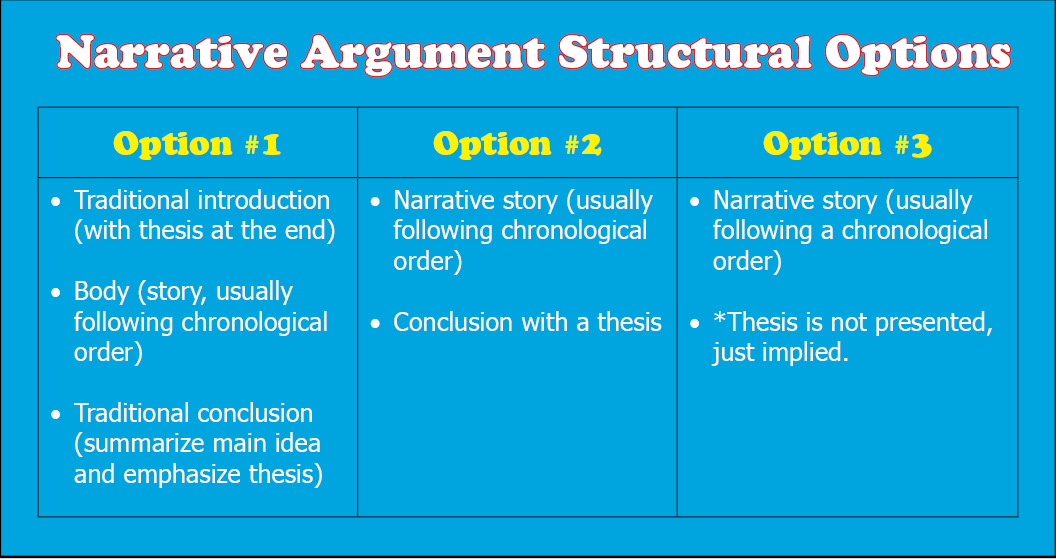A narrative essay is one that uses a story, usually presented in chronological order, to make some kind of point. When you are writing a narrative argument, that point is persuasive or argumentative.
Let’s say you want to make a point about gun control, and you want to argue for stricter gun control laws. In a narrative argument, you may not make this actual claim until the end. Instead, you should focus your essay on telling a story about a child who was killed because someone should not have had access to a gun.
Maybe you want to write an argument about climate change but know your audience is emotional about the topic. Instead of presenting statistics, you tell the story of one geographic location that has experienced some negative effects of climate change. You tell the story of the people who have been impacted.
Narrative Structure
You’re likely to see a lot of variation in the structure of narrative arguments. In many cases, your professor may want you to write a traditional introduction with a thesis statement and then use the body of your essay to tell your story. You may also be asked to include a traditional conclusion at the end.
However, you may encounter opportunities to write narrative arguments that save the thesis statement until the end or even use an implied thesis statement.
So, when writing a narrative argument, there may be options.

No matter which structure you follow, it’s a good idea to review elements of a good narrative in the Rhetorical Styles area of the Excelsior OWL.
You’ll want to check with your professor, ask him or her about your options, and review some sample narrative arguments, like the one that follows on the next page.
